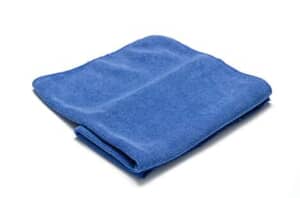 The need for cleaning contaminants from walls first came up in hospitals. Dealing with so many patients on a regular basis, hospitals wanted to make sure that they used the required appliances and techniques for the reduction of contaminants. It was believed that contaminants and allergens could also spread through the means of cleaning applications.
The need for cleaning contaminants from walls first came up in hospitals. Dealing with so many patients on a regular basis, hospitals wanted to make sure that they used the required appliances and techniques for the reduction of contaminants. It was believed that contaminants and allergens could also spread through the means of cleaning applications.
In a bid to find innovative and updated methods of cleaning, hospitals were the first to adopt color-coded microfiber mopping systems across their premises.
Hospitals adapted early to the microfiber coloring system because of how they were capable of preventing nosocomial infections from spreading across the hospital rooms.
Additionally, instead of applying the same looped-end mop across three patient rooms, hospitals are also looking to apply the standard flat mop per every patient room. This significantly reduces the ability of pathogens to travel from room to room through the mop itself.
Using color coded microfiber doesn’t just help hospitals in preventing cross contamination within hospitals, but it also helps with keeping intact a healthy environment within the premises.
Why Go for Color Coding?
Color coding should at no cost be considered as a substitute for the training of maintenance staff and the application of proper shifts and routine. All due methods of cleaning should be managed in the same manner as before, with the only difference being in the introduction of color coded microfiber.
Color coded microfiber gives an easy to remember system for cleaning staff to follow. Almost anyone can understand how the system works with these color-coded microfibers. Once you do understand how the system works, you can implement the teachings to supervise your staff.
Guide to Color Coding
Since color coding can be complex, with so many colors being part of the mix, the following list of colors and their perceived use will help you get the equation right. You can keep the process simple and effective by following this guide properly.
- Red: The color red can be used on restroom floors, on sanitary appliances, toilets, urinals and a lot of other places. Use red color coded microfibers on restroom floors.
- Yellow: The color yellow can appropriately be used on restroom surfaces, including towel dispensers, sinks, hand dryers, door handles and soap dispensers. The color will help with making bathroom accessories feel as good as new.
- Green: The color green can be used for general bar cleanup and washing away food wastages. Green microfibers and mops can be used within areas where food is consumed, such as lunchrooms.
- Blue: The color blue can be used for common low-risk areas that don’t have much contamination around them. Areas like common rooms, offices and classrooms can benefit from this color.
Proper Handling
You should also make sure to reduce cross contamination by properly handling the color coded microfibers. Some tips for this are:
- Store all of your cleaning products appropriately. Keep your mop pads and clean towels in plastic bags to prevent them from being contaminated once they are laundered.
- Make sure that you have a designated storage place for your microfibers. Clean all carts and bags as well.
- Make sure that your equipment is clean at all times.
If you want to make sure that your cleaning is being handled by professionals who know how to take care of business, get in touch with ServiceMaster Clean and let us take care of your home’s health for you!
We offer a whole host of services in the Triangle Area that will suit your needs and will give you a clean office that you and your employees deserve!

